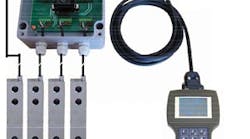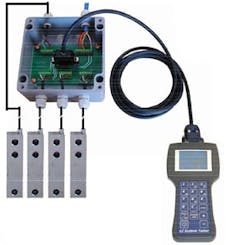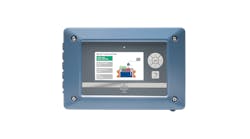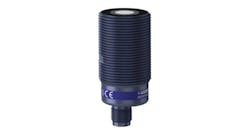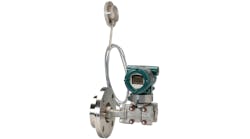Load cell weighing systems solve some of the knottiest problems in batch and level control by directly measuring masses of solids and liquids as they're accumulated, dispensed or conveyed. But the load cells must be installed and wired properly, and the load structure must be engineered and constructed correctly to distribute the measured load as axial forces on the cells. What appear on the surface to be simple wiring and construction tasks have caused more than a few problems during commissioning and maintenance due to miswired or poorly made connections, distorted or binding structures, incorrectly installed load cells or rigid connections to adjacent equipment.
Such problems often are not found until a new installation is being calibrated with test weights, or after an existing system is put back into operation following maintenance. To streamline their discovery by installers and maintainers, BLH Nobel has introduced a system that quickly and easily checks weighing systems for wiring and mechanical faults.
BLH Nobel's Load Cell Tester combines a handheld analyzer with a convenient junction box for fast detection and diagnosis of wiring and structural issues.
BLH Nobel's Load Cell Tester uses the company's Model 1006 handheld load cell tester/calibrator with its SL-5 summing box to allow quick, easy connection and testing of load cell systems. With one quick connection at the summing junction box, users can check as many as four load cells for proper installation and any deviation from their factory specifications.The summing box is available in diecast aluminum, plastic or stainless steel to suit the application environment. "You just plug the tester into the junction box with the plug on the cable, and you can see millivolts per volt, individual weight values, percent of load versus nominal capacity, and percent proportion of total weight for each load cell," says Ric Rummel, senior sales manager for the Americas at BLH Nobel. "Optional software allows users to save parameters for as many as 100 systems, and download them to a computer for archiving and reporting."
The load cell testing system simplifies weighing system commissioning. The conventional approach is to use test weights or to measure water into a tank to check system operation and calibration. This can be cumbersome, time-consuming and dangerous. "Instead of having to bring in and load up test weights, you just open the box and you're there, verifying that the cells are connected properly and that there are no mechanical problems such as binding or rigidity," Rummel says. "In addition, the load cell tester is also a full bridge load cell simulator, allowing the technician to apply 0% to 100% of the input into any controller or terminal."
Once the load cells are in operation, owners can use the system for periodic checking, usually weekly or monthly, to see if anything's wrong. If they suspect a problem, they can check a system. And if they see a problem, they can gather basic information before they call in a specialist technician. "They can eliminate that initial diagnostics call by giving information the technician can use to make sure they bring what they need on the first visit," Rummel says.
BLH Nobel developed the system as the result of extensive surveys of weighing system contractors and users, based on strong interest especially in the OEM, pharmaceutical, life sciences, and food and beverage industries. The system works with any brand of load cells—not just BLH Nobel.
"Like many items of capital equipment, when you consider installation, maintenance and calibration, the purchase price of a weighing system is small relative to the lifecycle cost," Rummel says. BLH Nobel's Load Cell Tester helps keep those lifecycle costs down by quickly and easily verifying proper operation of the mechanicals and electrical connections on newly installed weighing systems, then streamlining basic calibration and diagnosis of any faults throughout the life of the system.
For more information, visit www.blhnobel.com.

Leaders relevant to this article:
